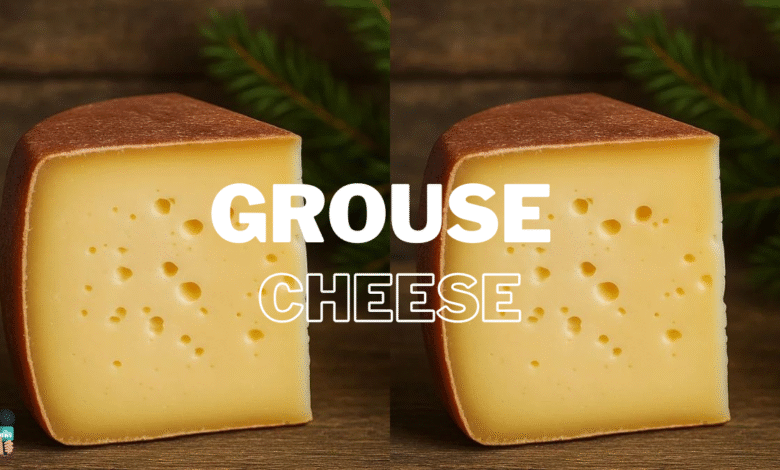Grouse cheese is a distinctive semi-hard cheese made from raw milk and traditionally crafted in remote highland regions. These areas, often dotted with rocky slopes, windswept plateaus, and stretches of heather, create a unique environment that influences the flavor and texture of the cheese. Unlike mass-produced varieties, grouse cheese carries the taste of its landscape in every bite.
Origins
The story of grouse cheese begins with highland farmers who depended on livestock for survival in a challenging climate. Harsh winters, brief summers, and unpredictable rains meant that communities needed ways to preserve milk for longer periods. Cheese-making became both a necessity and a cultural tradition.
Local herders discovered that the milk from their animals—often cows grazing on wild grasses, herbs, and sometimes near the same terrain frequented by grouse birds—produced a rich and flavorful base for cheese. Over time, specific methods for curdling, pressing, and aging developed into what we now recognize as grouse cheese.
Environment
Highland regions where grouse cheese is made are known for their rugged beauty. The soil is thin and stony, the winds can be fierce, and the vegetation is hardy. Grasses are interspersed with heather, wild thyme, and other herbs, which subtly infuse the milk with floral and earthy undertones.
The climate plays an equally important role. Cool, moist air slows the maturation process, allowing flavors to develop gradually. Seasonal changes in the diet of grazing animals bring slight variations in taste from batch to batch, making each wheel of cheese unique.
Production
Making grouse cheese is a hands-on process that has remained largely unchanged for generations.
- Milk Collection
Fresh raw milk is collected from animals grazing in the highlands. This milk is unpasteurized, allowing natural bacteria and enzymes to remain active. - Curd Formation
The milk is gently warmed before adding rennet, which causes it to set into curds. The curds are cut into small pieces, encouraging more whey to be released. - Pressing and Shaping
Once drained, the curds are pressed into molds to form the cheese’s characteristic semi-hard texture. This pressing stage also shapes the wheel or block. - Salting
Salt is rubbed on the surface or added to the curds before pressing. This step enhances flavor and helps with preservation. - Aging
The cheese is aged in cool, airy cellars or natural caves. This maturation can last from several weeks to several months, depending on the desired flavor intensity.
Texture and Flavor
Grouse cheese has a firm but supple texture, with small, irregular holes scattered throughout. When sliced, it reveals a pale, creamy interior, sometimes tinged with hints of gold from summer grazing.
The flavor is balanced and layered—mild at first, with a gentle nutty sweetness, followed by earthy tones reminiscent of the highland heather fields. Older wheels may carry a sharper, more pronounced tang.
Cultural Significance
In many highland communities, grouse cheese is more than food—it’s a symbol of local identity. Families often pass down their cheese-making techniques through generations, keeping recipes and methods closely guarded.
Seasonal fairs and markets showcase the cheese alongside other regional products like cured meats, oatcakes, and herbal teas. In some places, grouse cheese is also exchanged as a traditional gift, especially during harvest celebrations.
Culinary Uses
Grouse cheese’s versatility makes it a favorite in both rustic and refined cooking.
- Table Cheese: Enjoyed on its own, often with bread, fruit, or pickles.
- Melted: Ideal for gratins, pies, or melted over roasted vegetables.
- Pairings: Matches well with full-bodied wines, dark ales, and herbal infusions.
- Cooking Ingredient: Grated into soups or stews for added richness.
Because of its depth of flavor, it can also stand in for more common semi-hard cheeses in recipes, offering a highland twist to familiar dishes.
Seasonal Influence
One intriguing aspect of grouse cheese is how the time of year affects its taste. In spring and early summer, the cheese tends to be milder and creamier due to lush grazing conditions. By late summer and autumn, the milk reflects the stronger herbs and plants in the pasture, producing bolder flavors.
These variations mean that even cheese from the same maker can taste different depending on the season—a feature prized by enthusiasts.
Preservation and Storage
Grouse cheese should be stored in a cool, dry place, ideally wrapped in breathable paper to prevent excess moisture. Once cut, it should be consumed within a couple of weeks for optimal freshness, though aged versions keep longer.
Proper storage preserves not only the texture but also the subtle aroma that makes this cheese distinctive.
Challenges in Production
Despite its appeal, grouse cheese is not widely available outside its native regions. Small-scale production, reliance on raw milk, and the specific environmental conditions mean it’s often limited to local markets.
Producers face challenges such as:
- Maintaining consistent quality in a variable climate.
- Navigating regulations surrounding raw milk products.
- Competing with mass-produced cheeses in price and distribution.
Yet these very challenges help maintain the cheese’s artisanal character and exclusivity.
Modern Interest
In recent years, interest in traditional and artisanal foods has grown. Travelers seeking authentic experiences often seek out grouse cheese as part of culinary tours. Chefs looking to create unique menus also value it for its depth of flavor and cultural story.
Some makers have started experimenting with aging techniques, such as using wooden boards from specific local trees, or washing the rind with herbal infusions to enhance aroma.
Conclusion
Grouse cheese stands as a remarkable example of how landscape, tradition, and craftsmanship come together in food. From its origins in windswept highlands to its carefully guarded production methods, it offers a taste that cannot be replicated in industrial settings.
For those who have the chance to try it, grouse cheese is more than a culinary delight—it’s a bite of history, geography, and community spirit all at once.
